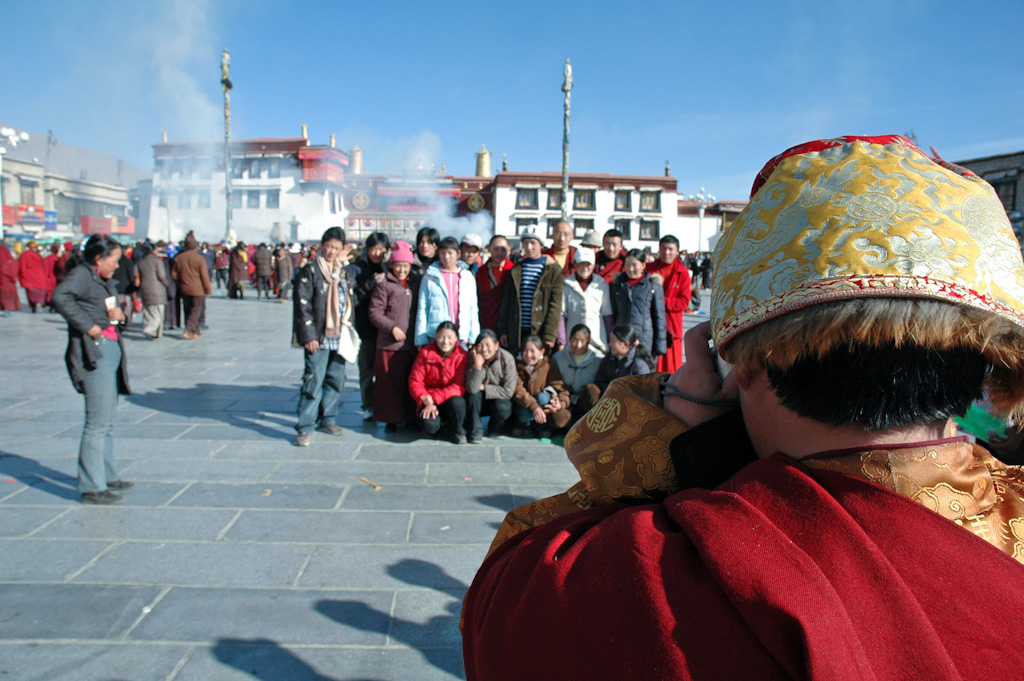I’m a fan of design provocation – little projects that challenge the way we think about and see the world. Which is why Sasha Pohflepp’s camera made me smile – press the button and it pulls a photo from the internet that was taken at the same time. We’re at a stage of techno-human evolution where connectivity can still bring about a sense of child like surprise and wonder – pause a moment to enjoy it because it’s an experience that most of you will look back on as an era of nostalgic innocence in years to come.
Here on future perfect we’ve been exploring and thinking about the future of cameras for quite a while – from understanding the first camera phone’s in Japan to the social rules that govern group photos in Lhasa and beyond the beyond. As an experience-capturing device ‘the camera’ makes for a wonderful object to explore: its ubiquity now crosses every demographic, every time-zone and most contexts – whether allowed or not; and the practical and social practices around taking photos are often finely entertwined with the events they are capturing. How might the future perfect connected camera differ from todays stand alone terminal? A couple of examples…
We’ve all been in situations where a photo hasn’t turned out – with a better connected, location and direction-aware camera it’s possible to pull on other peoples’ snaps of the same place – right down to knowing which camera settings they used to get their results.
The whole idea of pressing a button to ‘record’ an event is a powerful one – in part because it denotes the control and ownership to the button-presser. Ever been in a group and handed your camera to someone else to take the photo? How did you feel about the resulting photo – both in terms of attachment to what was taken and in terms of how it ended up being used? What happens when live feeds a-la USTREAM become the default functionality – is there a point where no-one expects ‘the photographer’ to actually hold the camera?
